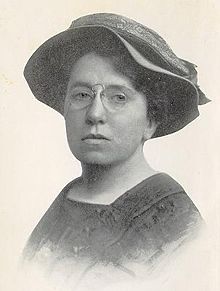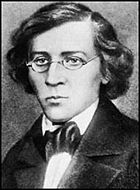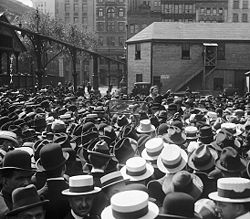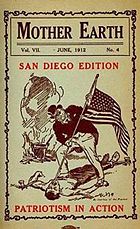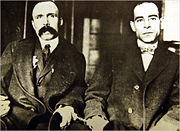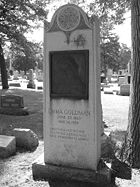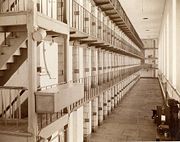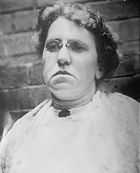Emma Goldman
2008/9 Schools Wikipedia Selection. Related subjects: Philosophers
Emma Goldman (June 27, 1869 – May 14, 1940) was an anarchist known for her political activism, writing and speeches. She was lionized as a free-thinking "rebel woman" by admirers, and derided by critics as an advocate of politically motivated murder and violent revolution.
Born in Kaunas, Lithuania (then part of the Russian Empire), to an Orthodox Jewish family, Goldman suffered from a violent relationship with her father. Although she attended schools in Königsberg, her father refused to allow her further education when the family moved to Saint Petersburg. Still, she read voraciously and educated herself about the politics of her time.
She emigrated to the United States with her sister Helena and settled in Rochester, New York, at the age of sixteen. Married briefly in 1887, Goldman divorced her husband and moved to New York City. Attracted to anarchism after the Haymarket affair, Goldman was inspired and encouraged toward public speaking by Johann Most and became a renowned lecturer, attracting crowds of thousands. The writer and anarchist Alexander Berkman became her lover, lifelong intimate friend, and comrade. Together they planned to assassinate Henry Clay Frick as an act of propaganda of the deed. Though Frick survived the attempt on his life, Berkman was sentenced to twenty-two years in prison. Goldman herself was imprisoned several times in the years that followed, for "inciting to riot" and illegally distributing information about birth control. In 1906, Goldman founded the anarchist journal Mother Earth.
In 1917, Goldman and Berkman were sentenced to two years in jail for conspiring to "induce persons not to register" for the newly instated draft. After their release from prison, they were arrested – with hundreds of others – and deported to Russia. Initially supportive of that country's Bolshevik revolution, Goldman quickly voiced her opposition to the Soviet use of violence and the repression of independent voices. In 1923, she wrote a book about her experiences, My Disillusionment in Russia. While living in England, Canada, and France, she wrote an autobiography called Living My Life. She traveled to Spain to participate in that nation's civil war. She died in Toronto on May 14, 1940.
Goldman played a pivotal role in the development of anarchist political philosophy in the United States and Europe in the first half of the twentieth century. Although she distanced herself from first-wave feminism and its efforts toward women's suffrage, she developed new ways of incorporating gender politics into anarchism. She spoke and wrote on a wide variety of issues, including prisons, atheism, freedom of speech, militarism, capitalism, marriage, free love, and homosexuality. After decades of obscurity, Goldman's iconic status was revived in the 1970s, when feminist and anarchist scholars rekindled popular interest in her life.
Biography
Family
Emma Goldman's Orthodox Jewish family lived in the Lithuanian city of Kaunas (called Kovno at the time, part of the Russian Empire). Goldman's mother Taube Bienowitch had been married before, to a man with whom she had two daughters – Helena in 1860 and Lena in 1862. When her first husband died of tuberculosis, Taube was devastated. Goldman later wrote: "Whatever love she had had died with the young man to whom she had been married at the age of fifteen."
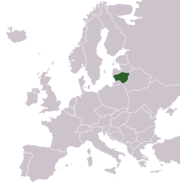
Taube's second marriage was arranged by her family and, as Goldman puts it, "mismated from the first." Her second husband, Abraham Goldman, invested Taube's inheritance in a business that quickly failed. The ensuing hardship combined with the emotional distance of husband and wife to make the household a tense place for the children. When Taube became pregnant, Abraham hoped desperately for a son; a daughter, he believed, would serve as one more sign of failure. They eventually had three sons, but their first child together was a girl, Emma.
Emma Goldman was born on June 27, 1869. Her father used violence to punish his children, beating them when they disobeyed him. He used a whip only on Emma, the most rebellious of them. Her mother provided scarce comfort, calling only rarely on Abraham to tone down his beatings. Goldman later speculated that her father's furious temper was at least partly a result of sexual frustration.
Goldman's relationships with her sisters Lena and Helena were a study in contrasts. Helena, the oldest, provided the comfort they lacked from their mother; she filled Goldman's childhood with "whatever joy it had". Lena, however, was distant and uncharitable. The three sisters were joined by brothers Louis (who died at the age of six), Herman (in 1872), and Moishe (in 1879).
Adolescence
When Emma was a young girl, the Goldman family moved to the village of Papilė, where her father ran an inn. While her sisters worked, she became friends with a servant named Petrushka, who excited her "first erotic sensations". Later in Papilė she witnessed a peasant being whipped with a knout in the street. This event traumatized her and contributed to her lifelong distaste for violent authority.
At the age of seven, Goldman moved with her family to the Prussian city of Königsberg (then part of the German Empire), and she enrolled in a Realschule. One teacher punished disobedient students – targeting Goldman in particular – by beating their hands with a ruler. Another teacher tried to molest his female students and was fired when Goldman fought back. She found a sympathetic mentor, however, in her German teacher, who loaned her books and even took her to an opera. A passionate student, Goldman passed the exam for admission into a gymnasium, but her religion teacher refused to provide a certificate of good behaviour and she was unable to attend.
The family moved to the Russian city of Saint Petersburg, where her father opened one unsuccessful store after another. Their poverty forced the children to work, and Goldman took an assortment of jobs including one in a corset shop. As a teenager Goldman begged her father to allow her to return to school, but instead he threw her French book into the fire and shouted: "Girls do not have to learn much! All a Jewish daughter needs to know is how to prepare gefilte fish, cut noodles fine, and give the man plenty of children."
Goldman pursued an independent education on her own, however, and soon began to study the political turmoil around her, particularly the Nihilists responsible for assassinating Alexander II of Russia. The ensuing turmoil intrigued Goldman, even though she did not fully understand it at the time. When she read Nikolai Chernyshevsky's novel What Is to Be Done? (1863), however, she found a role model in the protagonist Vera, who adopts a Nihilist philosophy and escapes her repressive family to live freely and organize a sewing cooperative. The book enthralled Goldman and remained a source of inspiration throughout her life.
Her father, meanwhile, continued to insist on a domestic future for her, and he tried to arrange for her to be married at the age of fifteen. They fought about the issue constantly: he complained that she was becoming a "loose" woman, and she insisted that she would marry for love alone. At the corset shop, she was forced to fend off unwelcome advances from Russian officers and other men. One persistent suitor took her into a hotel room and committed what Goldman called "violent contact"; two biographers call it rape. She was stunned by the experience, overcome by "shock at the discovery that the contact between man and woman could be so brutal and painful." Goldman felt that the encounter forever soured her interactions with men.
Rochester
In 1885 Helena made plans to move to New York to join her sister Lena and her husband. Goldman wanted to join her sister, but their father refused to allow it. Despite Helena's offer to pay for the trip, Abraham turned a deaf ear to their pleas. Desperate, Goldman threatened to throw herself into the Neva River if she could not go. He finally agreed, and on December 29, 1885, Helena and Emma arrived at New York's Castle Garden. They moved into the Rochester home Lena had made with her husband Samuel. Fleeing the rising antisemitism of Saint Petersburg, their parents and brothers joined them a year later. Goldman began working as a seamstress, sewing overcoats for more than ten hours a day, earning two and a half dollars a week. She asked for a raise and was denied; she quit and took work at a smaller shop nearby.
At her new job, Goldman met a fellow worker named Jacob Kershner, who shared her love for books, dancing, and traveling, as well as her frustration with the monotony of factory work. After four months they married in February 1887. Once he moved in with Goldman's family, however, their relationship faltered. On their wedding night she discovered that he was impotent; they became emotionally and physically distant. Before long he became jealous and suspicious. She, meanwhile, was becoming more engaged with the political turmoil around her – particularly the fallout of the 1886 Haymarket affair in Chicago and the anti-authoritarian political philosophy of anarchism. Less than a year after the wedding, they were divorced; he begged her to return and threatened to poison himself if she did not. They reunited, but after three months she left once again. Her parents considered her behaviour "loose" and refused to allow Goldman into their home. Carrying her sewing machine in one hand and a bag with five dollars in the other, she left Rochester and headed southeast to New York City.
Most and Berkman
On her first day in the city, Goldman met two men who would forever change her life. At Sachs's Café, a gathering place for radicals, she was introduced to Alexander Berkman, an anarchist who invited her to a public speech that evening. They went to hear Johann Most, editor of a radical publication called Die Freiheit and an advocate of " propaganda of the deed" – the use of violence to instigate change. She was impressed by his fiery oration, and he took her under his wing, training her in methods of public speaking. He encouraged her vigorously, telling her that she was "to take my place when I am gone." One of her first public talks in support of "the Cause" was in Rochester. After convincing Helena not to tell their parents of her speech, Goldman found her mind a blank once on stage. Suddenly,
something strange happened. In a flash I saw it—every incident of my three years in Rochester: the Garson factory, its drudgery and humiliation, the failure of my marriage, the Chicago crime.… I began to speak. Words I had never heard myself utter before came pouring forth, faster and faster. They came with passionate intensity…. The audience had vanished, the hall itself had disappeared; I was conscious only of my own words, of my ecstatic song.
Enchanted by the experience, she refined her public persona during subsequent engagements. Quickly, however, she found herself arguing with Most over her independence. After a momentous speech in Cleveland, she felt as though she had become "a parrot repeating Most's views" and resolved to express herself on the stage. Upon her return in New York, Most became furious and told her: "Who is not with me is against me!" She left Die Freiheit and joined with another publication, Die Autonomie.
Meanwhile, she had begun a friendship with Berkman, whom she affectionately called Sasha. Before long they became lovers and moved into a communal apartment with his cousin Modest "Fedya" Stein and Goldman's friend, Helen Minkin in rural Woodstock, Illinois. Although their relationship had numerous difficulties, Goldman and Berkman would share a close bond for decades, united by their anarchist principles and commitment to personal equality.
Homestead plot
One of the first political moments that brought Berkman and Goldman together was the Homestead Strike. In June 1892, a steel plant in Homestead, Pennsylvania owned by Andrew Carnegie became the focus of national attention when talks between the Carnegie Steel Company and the Amalgamated Association of Iron and Steel Workers (AA) broke down. The factory's manager was Henry Clay Frick, a fierce opponent of the union. When a final round of talks failed at the end of June, management closed the plant and locked out the workers, who immediately went on strike. Strikebreakers were brought in and the company hired Pinkerton guards to protect them. On July 6 a fight broke out between three hundred Pinkerton guards and a crowd of armed union workers. During the twelve-hour gunfight, seven guards and nine strikers were killed.
When a majority of the nation's newspapers came out in support of the strikers, Goldman and Berkman resolved to assassinate Frick, an action they expected would inspire the workers to revolt against the capitalist system. Berkman chose to carry out the assassination, and ordered Goldman to stay behind in order to explain his motives after he went to jail. He would be in charge of the deed; she of the word. Berkman tried and failed to make a bomb, then set off for Pittsburgh to buy a gun and a suit of decent clothes.
Goldman, meanwhile, decided to help fund the scheme through prostitution. Remembering the character of Sonya in Fyodor Dostoevsky's novel Crime and Punishment (1866), she mused: "She had become a prostitute in order to support her little brothers and sisters…. Sensitive Sonya could sell her body; why not I?" Once on the street, she caught the eye of a man who took her into a saloon, bought her a beer, gave her ten dollars, informed her she did not have "the knack", and told her to quit the business. She was "too astounded for speech". She wrote to Helena, claiming illness, and asked her for fifteen dollars.
When he arrived in Homestead on July 23, Berkman gained access to Frick's office with a concealed handgun and shot Frick three times, then stabbed him in the legs. A group of workers – far from joining in his attentat – beat Berkman unconscious, and he was carried away by the police. Berkman was convicted of attempted murder and sentenced to twenty-two years in prison; his absence from her life was very difficult for Goldman. Convinced Goldman was involved in the plot, police raided her apartment and – finding no evidence – pressured her landlord into evicting her. Worse, the attentat had failed to rouse the masses: workers and anarchists alike condemned Berkman's action. Johann Most, their former mentor, lashed out at Berkman and the assassination attempt, claiming it was carried out to create sympathy for Frick. Furious at these attacks, Goldman brought a horsewhip to a public lecture and demanded, onstage, that Most provide evidence for his accusation. He dismissed her, whereupon she struck him with the whip, broke it on her knee, and hurled the pieces at him. She later regretted her assault, confiding to a friend: "At the age of twenty-three, one does not reason."
"Inciting to riot"
When the Panic of 1893 struck in the following year, the United States suffered one of its worst economic crises ever. By year's end, the unemployment rate was higher than twenty percent, and "hunger demonstrations" sometimes gave way to riots. Goldman began speaking to crowds of frustrated men and women in New York. On August 21, she spoke to a crowd of nearly 3,000 people in Union Square, where she encouraged unemployed workers to take immediate action. Her exact words are unclear: undercover agents insist she ordered the crowd to "take everything … by force", while Goldman later recounted this message: "Well then, demonstrate before the palaces of the rich; demand work. If they do not give you work, demand bread. If they deny you both, take bread." Later in court, Detective-Sergeant Charles Jacobs offered yet another version of her speech.
A week later she was arrested in Philadelphia and returned to New York City for trial, charged with "inciting to riot". During the train ride, Jacobs offered to drop the charges against her if she would inform on other radicals in the area. She responded by throwing a glass of ice water in his face. As she awaited trial, Goldman was visited by Nellie Bly, a reporter for the New York World. She spent two hours talking to Goldman, and wrote a positive article about the woman she described as a "modern Joan of Arc".
Despite this positive publicity, the jury was persuaded by Jacobs' testimony and scared by Goldman's politics. The assistant District Attorney questioned Goldman about her anarchism, as well as her atheism; the judge spoke of her as "a dangerous woman". She was sentenced to one year in the Blackwell's Island Penitentiary. Once inside she suffered an attack of rheumatism and was sent to the infirmary; there she befriended a visiting doctor and began studying medicine. She also read dozens of books, including works by the American activist-writers Ralph Waldo Emerson and Henry David Thoreau; novelist Nathaniel Hawthorne; poet Walt Whitman, and philosopher John Stuart Mill. When she was released after ten months, a raucous crowd of nearly three thousand people greeted her at the Thalia Theatre in New York City. She soon became swamped with requests for interviews and lectures.
To make money, Goldman decided to pursue the medical work she had studied in prison. However, her preferred fields of specialization – midwifery and massage – were not available to nursing students in the US. Thus, she sailed to Europe, lecturing in London, Glasgow, and Edinburgh. She met with renowned anarchists like Errico Malatesta, Louise Michel, and Peter Kropotkin. In Vienna she received two diplomas and put them immediately to use back in the US. Alternating between lectures and midwifery, she conducted the first cross-country tour by an anarchist speaker. In November 1899 she returned to Europe, where she met the anarchist Hippolyte Havel, with whom she began a relationship. Together they went to France and helped organize the International Anarchist Congress on the outskirts of Paris.
McKinley assassination
On September 6, 1901, Leon Czolgosz, an unemployed factory worker with a history of mental illness, shot US President William McKinley twice during a public speaking event in Buffalo, New York. McKinley was hit in the breastbone and stomach; eight days later, he died. Czolgosz was arrested and interrogated around the clock. Because he was an anarchist and had interacted several times with Goldman, authorities became convinced that she had planned the action. They tracked her to a residence in Chicago she shared with Havel and Abe and Mary Isaak, an anarchist couple. Goldman was arrested, along with Abe Isaak, Havel, and ten other anarchists.
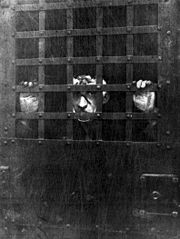
Earlier, Czolgosz had tried but failed to become friends with Goldman and her companions. During a talk in Cleveland, Ohio, Czolgosz had approached Goldman and asked her advice on which books he should read. In July 1901, he had appeared at the Isaak house, asking a series of unusual questions. They assumed he was an infiltrator, like a number of police agents sent to spy on radical groups. They had remained distant from him, and Abe Isaak sent a notice to associates warning of "another spy".
Although Czolgosz repeatedly denied Goldman's involvement, the police held her in close custody, subjecting her to what she called the "third degree". She explained their distrust of him, and it was clear she had not had any significant contact with Czolgosz. No evidence was found linking Goldman to the attack, and she was eventually released after two weeks of detention. Before McKinley died, Goldman offered to provide nursing care, referring to him as "merely a human being". Czolgosz, despite considerable evidence of mental illness, was convicted of murder and executed.
Throughout her detention and after her release, Goldman steadfastly refused to condemn Czolgosz' action, standing virtually alone in doing so. Friends and supporters – including Berkman – urged her to quit his cause. But Goldman defended Czolgosz as a "supersensitive being" and chastised other anarchists for abandoning him. Many newspapers, meanwhile, declared the anarchist movement responsible for the murder. In the wake of these events, socialism gained support over anarchism among US radicals. McKinley's successor Theodore Roosevelt declared his intent to crack down "not only against anarchists, but against all active and passive sympathizers with anarchists".
Mother Earth and Berkman's release
After Czolgosz's execution, Goldman withdrew from the world. Scorned by her fellow anarchists, vilified by the press, and separated from her love, she retreated into anonymity and nursing. "It was bitter and hard to face life anew," she wrote later. Using the name E. G. Smith, she vanished from public life and took on a series of private nursing jobs. When the US Congress passed the Anarchist Exclusion Act, however, a new wave of activism rose to oppose it, carrying Goldman back into the movement. A coalition of people and organizations across the left end of the political spectrum opposed the law on grounds that it violated freedom of speech, and she had the nation's ear once again.
When a Scottish anarchist named John Turner was denied entry into the country, Goldman helped organize a group called the Free Speech League. It enlisted the aid of Clarence Darrow and Edgar Lee Masters, who took Turner's case to the US Supreme Court. Although Turner and the League lost, Goldman considered it a victory of propaganda. She had returned to anarchist activism, but it was taking its toll on her. "I never felt so weighed down," she wrote to Berkman. "I fear I am forever doomed to remain public property and to have my life worn out through the care for the lives of others."
In 1906 Goldman decided to start a publication of her own, "a place of expression for the young idealists in arts and letters". Mother Earth was staffed by a cadre of radical activists, including Hippolyte Havel, Max Baginski, and Leonard Abbott. In addition to publishing original works by its editors and anarchists around the world, Mother Earth reprinted selections from a variety of writers. These included the French philosopher Pierre-Joseph Proudhon, Russian anarchist Peter Kropotkin, German philosopher Friedrich Nietzsche, and British writer Mary Wollstonecraft. Goldman wrote frequently about anarchism, politics, labor issues, atheism, sexuality, and feminism.
On May 18 of the same year, Alexander Berkman was released from prison. Carrying a bouquet of roses, she met him on the platform and found herself "seized by terror and pity" as she beheld his gaunt, pale form. Neither was able to speak; they returned to her home in silence. For weeks he struggled to readjust to life on the outside; an abortive speaking tour ended in failure, and in Cleveland he purchased a revolver with the intent of killing himself. He returned to New York, however, and learned that Goldman had been arrested with a group of activists meeting to reflect on Leon Czolgosz. Invigorated anew by this violation of freedom of assembly, he declared "My resurrection has come!" and set about securing their release.
Berkman took the helm of Mother Earth in 1907, while Goldman toured the country to raise funds to keep it functional. Editing the magazine was a revitalizing experience for Berkman; his relationship with Goldman faltered, however, and he had an affair with a fifteen-year-old anarchist named Becky Edelsohn. Goldman was pained by his rejection of her, but considered it a consequence of his prison experience. Later that year she served as a delegate from the US to the International Anarchist Congress of Amsterdam. Anarchists and syndicalists from around the world gathered to sort out the tension between the two ideologies, but no decisive agreement was reached. Goldman returned to the US and continued speaking to large audiences.
Reitman, essays, and birth control
For the next ten years, Goldman traveled around the country nonstop, delivering lectures and agitating for anarchism. The coalitions formed in opposition to the Anarchist Exclusion Act had given her an appreciation for reaching out to those of other political persuasions. When the US Justice Department sent spies to observe, they reported the meetings as "packed". Writers, journalists, artists, judges, and workers from across the spectrum spoke of her "magnetic power", her "convincing presence", her "force, eloquence, and fire".
In the spring of 1908 Goldman met and fell in love with Ben Reitman, the so-called "Hobo doctor". Having grown up in Chicago's tenderloin district, Reitman spent several years as a drifter before attaining a medical degree from the College of Physicians and Surgeons of Chicago. As a doctor, he attended to people suffering from poverty and disease – particularly venereal disease. He and Goldman began an affair; they shared a commitment to free love, but whereas Reitman took a variety of lovers, Goldman did not. She tried to reconcile her feelings of jealousy with a belief in freedom of the heart, but found it difficult.
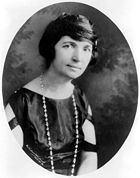
Two years later Goldman began feeling frustrated with lecture audiences. She yearned to "reach the few who really want to learn, rather than the many who come to be amused". Thus she collected a series of speeches and items she had written for Mother Earth and published a book called Anarchism and Other Essays. Covering a wide variety of topics, Goldman tries to represent "the mental and soul struggles of twenty-one years". In addition to a comprehensive look at anarchism and its criticisms, the book includes essays on patriotism, women's suffrage, marriage, and prisons.
When Margaret Sanger, an advocate of access to contraception, coined the term "birth control" and disseminated information about various methods in the June 1914 issue of her magazine The Woman Rebel, she received aggressive support from Goldman. Sanger was arrested in August under the Comstock Law, which prohibited the dissemination of "obscene, lewd, or lascivious articles" – including information relating to birth control. Although they later split from Sanger over charges of insufficient support, Goldman and Reitman distributed copies of Sanger's pamphlet Family Limitation (along with a similar essay of Reitman's). In 1915 Goldman conducted a nationwide speaking tour in part to raise awareness about contraception options. Although the nation's attitude toward the topic seemed to be liberalizing, Goldman was arrested in February 1916 and charged with violation of the Comstock Law. Choosing not to pay a hundred-dollar fine, she spent two weeks in a prison workhouse, which she saw as an "opportunity" to reconnect with those rejected by society.
World War I
Although US President Woodrow Wilson was re-elected in 1916 under the slogan "He kept us out of the war", at the start of his second term he decided that Germany's continued deployment of unrestricted submarine warfare was sufficient cause for the US to enter World War I. Shortly afterward, Congress passed the Selective Service Act of 1917, which required all males aged 21–30 to register for military conscription. Goldman saw the decision as an exercise in militarist aggression, driven by capitalism. She declared in Mother Earth her intent to resist conscription, and to oppose US involvement in the war.
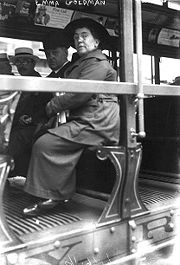
To this end, she and Berkman organized the No Conscription League of New York, which proclaimed: "We oppose conscription because we are internationalists, antimilitarists, and opposed to all wars waged by capitalistic governments." The group became a vanguard for anti-draft activism, and chapters began to appear in other cities. When police began raiding the group's public events to find young men who had not registered for the draft, however, Goldman and others focused their efforts on spreading pamphlets and other written work. In the midst of the nation's patriotic fervor, many elements of the political left refused to support the League's efforts. The Women's Peace Party, for example, ceased its opposition to the war once the US entered it. The Socialist Party of America took an official stance against US involvement, but supported Wilson in most of his activities.
On June 15, 1917, Goldman and Berkman were arrested during a raid of their offices which yielded "a wagon load of anarchist records and propaganda" for the authorities. The New York Times reported that Goldman asked to change into a more appropriate outfit, and emerged in a gown of "royal purple". The pair were charged with conspiracy to "induce persons not to register" under the newly enacted Espionage Act, and were held on US$25,000 bail each. Defending herself and Berkman during their trial, Goldman invoked the First Amendment, asking how the government could claim to fight for democracy abroad while suppressing free speech at home.
We say that if America has entered the war to make the world safe for democracy, she must first make democracy safe in America. How else is the world to take America seriously, when democracy at home is daily being outraged, free speech suppressed, peaceable assemblies broken up by overbearing and brutal gangsters in uniform; when free press is curtailed and every independent opinion gagged? Verily, poor as we are in democracy, how can we give of it to the world?
The jury saw it differently, and found them guilty; Judge Julius Marshuetz Mayer imposed the maximum sentence two years' imprisonment, a $10,000 fine each, and the possibility of deportation after their release from prison. As she was transported to Missouri State Penitentiary (now Jefferson City Correctional Centre), Goldman wrote to a friend: "Two years imprisonment for having made an uncompromising stand for one's ideal. Why that is a small price."
In prison she was assigned once again to work as a seamstress, under the eye of a "miserable gutter-snipe of a twenty-one-year-old boy paid to get results". She met the socialist Kate Richards O'Hare, who had also been imprisoned under the Espionage Act. Although they differed on political strategy – O'Hare believed in voting to achieve state power – the two women came together to agitate for better conditions among prisoners. Goldman also met and became friends with Gabriella Segata Antolini, an anarchist and follower of Luigi Galleani. Antolini had been arrested transporting a satchel filled with dynamite on a Chicago-bound train. She had refused to cooperate with authorities, and was sent to prison for fourteen months. Working together to make life better for the other inmates, the three women became known as "The Trinity". Goldman was released on September 27, 1919.
Russia
When Goldman and Berkman were released, the first US Red Scare was in full swing; the Bolshevik-led Russian Revolution of 1917 had combined with wartime anxiety to produce a climate of hostility toward radicals and non-citizens. The US Department of Justice's General Intelligence Division, headed by J. Edgar Hoover and under the direction of Attorney General Alexander Mitchell Palmer, conducted a series of raids to arrest radicals. In a memorandum prepared while they were in prison, Hoover wrote: "Emma Goldman and Alexander Berkman are, beyond doubt, two of the most dangerous anarchists in this country and [a] return to the community will result in undue harm." Although her marriage to Jacob Kershner arguably provided her with legitimate US citizenship, the government invoked the 1918 Anarchist Exclusion Act and deported both Goldman and Berkman to the Soviet Union, along with over two hundred others.

Goldman had viewed the Bolshevik revolution as a positive step when it first took place. She wrote in Mother Earth that despite its dependence on Communist government, it represented "the most fundamental, far-reaching and all-embracing principles of human freedom and of economic well-being". By the time she and her fellow deportees neared Europe, however, she expressed fears about what was to come. She was worried about the ongoing Russian Civil War, and the possibility of being seized by anti-Bolshevik forces. The state, anti-capitalist though it was, also posed a threat. "I could never in my life work within the confines of the State," she wrote to her niece, "Bolshevist or otherwise."
These fears were justified, as she quickly discovered. Days after returning to Petrograd (Saint Petersburg), she was shocked to hear a party official refer to free speech as a "bourgeois superstition". As she and Berkman traveled around the country, they found repression, mismanagement, and corruption instead of the equality and worker empowerment they had dreamed of. Those who questioned the government were demonized as counter-revolutionaries, and workers labored under severe conditions. They met with Vladimir Lenin, who assured them that government suppression of press liberties was justified. He told them: "There can be no free speech in a revolutionary period." Berkman was more willing to forgive the government's actions in the name of "historical necessity", but he eventually joined Goldman in opposing the Soviet state's authority.
In March 1921, strikes erupted in Petrograd when workers took to the streets demanding better food rations and more union autonomy. Goldman and Berkman felt a responsibility to support the strikers, stating: "To remain silent now is impossible, even criminal." The unrest spread to the port town of Kronstadt, where a military response was ordered. In the fighting that ensued, six hundred sailors were killed; two thousand more were arrested; and thousands of Soviet troops died. In the wake of these events, Goldman and Berkman decided there was no future in the country for them. "More and more," she wrote, "we have come to the conclusion that we can do nothing here. And as we can not keep up a life of inactivity much longer we have decided to leave."
In December 1921 they left the country and went to the Latvian capital city of Riga. The US commissioner in that city wired officials in Washington DC, who began requesting information from other governments about the couple's activities. After a short trip to Stockholm, they moved to Berlin for several years; during this time she agreed to write a series of articles about her time in Russia for Joseph Pulitzer's newspaper, the New York World. These were later collected and published in book form as My Disillusionment in Russia (1923) and My Further Disillusionment in Russia (1924). The titles of these books were added by the publishers to be scintillating and Goldman protested, albeit in vain.
England, Canada, and France
Goldman found it difficult to acclimate to the German leftist community. Communists despised her outspokenness about Soviet repression; liberals derided her radicalism. While Berkman remained in Berlin helping Russian exiles, she moved to London in September 1924. Upon her arrival the novelist Rebecca West arranged a reception dinner for her, attended by philosopher Bertrand Russell, novelist H. G. Wells, and more than two hundred others. When she spoke of her dissatisfaction with the Soviet government, the audience was shocked. Some left the gathering; others berated her for prematurely criticizing the Communist experiment. Later, in a letter, Russell declined to support her efforts at systemic change in the Soviet Union and ridiculed her anarchist idealism.
In 1925, the spectre of deportation loomed again, but a Scottish anarchist named James Colton offered to marry her and provide British citizenship. Although they were only distant acquaintances, she accepted and they were married on June 27, 1925. Her new status gave her peace of mind, and allowed her to travel to France and Canada. Life in London was stressful for Goldman; she wrote to Berkman: "I am awfully tired and so lonely and heartsick. It is a dreadful feeling to come back here from lectures and find not a kindred soul, no one who cares whether one is dead or alive." She worked on analytical studies of drama, expanding on the work she had published in 1914. But the audiences were "awful" and she never finished her second book on the subject.
Goldman traveled to Canada in 1927, just in time to receive news of the impending executions of Italian anarchists Nicola Sacco and Bartolomeo Vanzetti in New York. Angered by the many irregularities of the case, she saw it as another travesty of justice in the US. She longed to join the mass demonstrations in Boston; memories of the Haymarket affair overwhelmed her, compounded by her isolation. "Then," she wrote, "I had my life before me to take up the cause for those killed. Now I have nothing."
In 1928 she began writing her autobiography, with the support of a group of admirers, including journalist H. L. Mencken, poet Edna St. Vincent Millay, and novelist Theodore Dreiser. She secured a cottage in the French coastal city of Saint-Tropez and spent two years recounting her life. Berkman offered sharply critical feedback, which she eventually incorporated at the price of a strain on their relationship. Goldman intended the book, Living My Life, as a single volume for a price the working class could afford (she urged no more than $5.00); her publisher Alfred A. Knopf, however, released it as two volumes sold together for $7.50. Goldman was furious, but unable to force a change. Due in large part to the Great Depression, sales were sluggish despite keen interest from libraries around the US. Critical reviews were generally enthusiastic; the New York Times, New Yorker, and Saturday Review of Literature all listed it as one of the year's top non-fiction books.
In 1933 Goldman received permission to lecture in the United States under the condition that she speak only about drama and her autobiography – but not current political events. She returned to New York on February 2, 1934 to generally positive press coverage – except from Communist publications. Soon she was surrounded by admirers and friends, besieged with invitations to talks and interviews. Her visa expired in May, and she went to Toronto in order to file another request to visit the US. However, this second attempt was denied. She stayed in Canada, writing articles for US publications.
In February and March 1936 Berkman underwent a pair of prostate gland operations. Recuperating in Nice and cared for by his companion, Emmy Eckstein, he missed Goldman's sixty-seventh birthday in Saint-Tropez in June. She wrote in sadness, but he never read the letter; she received a call in the middle of the night that Berkman was in great distress. She left for Nice immediately but when she arrived that morning, Goldman found that he had shot himself and was in a nearly comatose paralysis. He died the next day.
Spanish Civil War
In July 1936, the Spanish Civil War started after an attempted coup d'état committed by parts of the army against the government of the Second Spanish Republic. At the same time, the Spanish anarchists, fighting against the fascist forces, started an anarchist revolution. Goldman was invited to Barcelona and in an instant, as she wrote to her niece, "the crushing weight that was pressing down on my heart since Sasha's death left me as by magic". She was welcomed by the Confederación Nacional del Trabajo (CNT) and Federación Anarquista Ibérica (FAI) organizations, and for the first time in her life lived in a community run by and for anarchists, according to true anarchist principles. "In all my life," she wrote later, "I have not met with such warm hospitality, comradeship and solidarity." After touring a series of collectives in the province of Huesca, she told a group of workers: "Your revolution will destroy forever [the notion] that anarchism stands for chaos." She began editing the weekly CNT-FAI Information Bulletin and responded to English-language mail.
Goldman began to worry about the future of Spain's anarchism when the CNT-FAI joined a coalition government in 1937 – against the core anarchist principle of abstaining from state structures – and, more distressingly, made repeated concessions to Communist forces in the name of uniting against fascism. She wrote that cooperating with Communists in Spain was "a denial of our comrades in Stalin's concentration camps". Russia, meanwhile, refused to send weapons to anarchist forces, and disinformation campaigns were being waged against the anarchists across Europe and the US. Her faith in the movement unshaken, Goldman returned to London as an official representative of the CNT-FAI.
Delivering lectures and giving interviews, Goldman enthusiastically supported the Spanish anarcho-syndicalists. She wrote regularly for Spain and the World, a biweekly newspaper focusing on the civil war. In May 1937, however, Communist-led forces attacked anarchist strongholds and broke up agrarian collectives. Newspapers in England and elsewhere accepted the timeline of events offered by the Second Spanish Republic at face value. British journalist George Orwell, present for the crackdown, wrote: "[T]he accounts of the Barcelona riots in May … beat everything I have ever seen for lying."
Goldman returned to Spain in September, but the CNT-FAI appeared to her like people "in a burning house". Worse, anarchists and other radicals around the world refused to support their cause. The Nationalist forces declared victory in Spain just before she returned to London. Frustrated by England's repressive atmosphere – which she called "more fascist than the fascists" – she returned to Canada in 1939. Her service to the anarchist cause in Spain was not forgotten, however. On her seventieth birthday, the former Secretary-General of the CNT-FAI, Mariano Vàzquez, sent a message to her from Paris, praising her for her contributions and naming her as "our spiritual mother". She called it "the most beautiful tribute I have ever received".
Final years
As the events preceding World War Two began to unfold in Europe, Goldman reiterated her opposition to wars waged by governments. "[M]uch as I loathe Hitler, Mussolini, Stalin and Franco," she wrote to a friend, "I would not support a war against them and for the democracies which, in the last analysis, are only Fascist in disguise." She felt that England and France had missed their opportunity to oppose fascism, and that the coming war would only result in "a new form of madness in the world". This position was vastly unpopular, as Hitler's attacks on Jewish communities reverberated throughout the Jewish diaspora.
Death
On Saturday, February 17, 1940, Goldman suffered a debilitating stroke. She became paralyzed on her right side, and although her hearing was unaffected, she could not speak. As one friend described it: "Just to think that here was Emma, the greatest orator in America, unable to utter one word." For three months she improved slightly, receiving visitors and on one occasion gesturing to her address book to signal that a friend might find friendly contacts during a trip to Mexico. She suffered another stroke on May 8, however, and on May 14 she died in Toronto, Canada. The US Immigration and Naturalization Service allowed her body to be brought back to the United States, and she was buried in Chicago's German Waldheim Cemetery with other labor activists and radicals, near the graves of those executed after the Haymarket affair.
Philosophy
Goldman spoke and wrote extensively on a wide variety of issues. While she rejected orthodoxy and fundamentalist thinking, she was an important contributor to several fields of modern political philosophy. She was influenced by many diverse thinkers and writers, including Mikhail Bakunin, Henry David Thoreau, Peter Kropotkin, Ralph Waldo Emerson, Nikolai Chernyshevsky, and Mary Wollstonecraft. Another philosopher who influenced Goldman was Friedrich Nietzsche. In her autobiography she wrote: "Nietzsche was not a social theorist, but a poet, a rebel, and innovator. His aristocracy was neither of birth nor of purse; it was the spirit. In that respect Nietzsche was an anarchist, and all true anarchists were aristocrats."
Anarchism
Anarchism was central to Goldman's view of the world and she is today considered one of the most important figures in the history of anarchism. First drawn to it during the persecution of anarchists after the 1886 Haymarket affair, she wrote and spoke regularly on behalf of anarchism. In the title essay of her book Anarchism and Other Essays, she wrote:
Anarchism, then, really stands for the liberation of the human mind from the dominion of religion; the liberation of the human body from the dominion of property; liberation from the shackles and restraint of government. Anarchism stands for a social order based on the free grouping of individuals for the purpose of producing real social wealth; an order that will guarantee to every human being free access to the earth and full enjoyment of the necessities of life, according to individual desires, tastes, and inclinations.
Goldman's anarchism was intensely personal. She believed it was necessary for anarchist thinkers to live their beliefs, demonstrating their convictions with every action and word. "I don't care if a man's theory for tomorrow is correct," she once wrote. "I care if his spirit of today is correct." Anarchism and free association were to her logical responses to the confines of government control and capitalism. "It seems to me that these are the new forms of life," she wrote, "and that they will take the place of the old, not by preaching or voting, but by living them."
At the same time, she believed that the movement on behalf of human liberty must be staffed by liberated humans. While dancing among fellow anarchists one evening, she was chided by an associate for her carefree demeanor. In her autobiography Goldman wrote:
I told him to mind his own business, I was tired of having the Cause constantly thrown in my face. I did not believe that a Cause which stood for a beautiful ideal, for anarchism, for release and freedom from conventions and prejudice, should demand denial of life and joy. I insisted that our Cause could not expect me to behave as a nun and that the movement should not be turned into a cloister. If it meant that, I did not want it. "I want freedom, the right to self-expression, everybody's right to beautiful, radiant things."
Capitalism
Goldman believed that the economic system of capitalism was inimical to human liberty. "The only demand that property recognizes," she wrote in Anarchism and Other Essays, "is its own gluttonous appetite for greater wealth, because wealth means power; the power to subdue, to crush, to exploit, the power to enslave, to outrage, to degrade." She also argued that capitalism dehumanized workers, "turning the producer into a mere particle of a machine, with less will and decision than his master of steel and iron."
Originally opposed to anything less than complete revolution, Goldman was challenged during one talk by an elderly worker in the front row. In her autobiography, she wrote:
He said that he understood my impatience with such small demands as a few hours less a day, or a few dollars more a week.… But what were men of his age to do? They were not likely to live to see the ultimate overthrow of the capitalist system. Were they also to forgo the release of perhaps two hours a day from the hated work? That was all they could hope to see realized in their lifetime.
Goldman realized that smaller efforts for improvement such as higher wages and shorter hours could be part of a social revolution.
Tactics
Among the tactics that Goldman endorsed was targeted violence. Early in her career Goldman believed that the use of violence, while distasteful, could be effective in achieving a greater good. She advocated propaganda of the deed – attentat, or violence carried out to encourage the masses to revolt. She supported her partner Alexander Berkman's attempt to kill industrialist Henry Clay Frick, and even begged him to allow her to participate. She believed that Frick's actions during the Homestead strike were reprehensible and that his murder would produce a positive result for working people. "Yes," she wrote later in her autobiography, "the end in this case justified the means." While she never gave explicit approval of Leon Czolgosz's assassination of U.S. President William McKinley, she defended his ideals and believed actions like his were a natural consequence of repressive institutions. As she wrote in "The Psychology of Political Violence": "the accumulated forces in our social and economic life, culminating in an act of violence, are similar to the terrors of the atmosphere, manifested in storm and lightning."
Her experiences in Russia led her to reassess her earlier belief that revolutionary ends justified violent means. The repression and authoritarian control of the Soviet Union caused a radical shift in her perspective. Indeed, by 1923 she had nearly reversed her position. In the afterword to My Disillusionment in Russia, she wrote: "There is no greater fallacy than the belief that aims and purposes are one thing, while methods and tactics are another.… The means employed become, through individual habit and social practice, part and parcel of the final purpose…."
Nevertheless, she viewed the state as essentially and inevitably a tool of control and domination. As a result, Goldman believed that voting was useless at best and dangerous at worst. Voting, she wrote, provided an illusion of participation while masking the true structures of decision-making. Instead, Goldman advocated targeted resistance in the form of strikes, protests, and "direct action against the invasive, meddlesome authority of our moral code". She maintained an anti-voting position even when many anarcho-syndicalists in 1930s Spain voted for the formation of a liberal republic. Goldman wrote that any power anarchists wielded as a voting bloc should instead be used to strike across the country. She disagreed with the movement for women's suffrage, which demanded the right of women to vote. In her essay "Woman Suffrage", she ridicules the idea that women's involvement would infuse the democratic state with a more just orientation: "As if women have not sold their votes, as if women politicians cannot be bought!" She agreed with the suffragists' assertion that women are equal to men, but disagreed that their participation alone would make the state more just. "To assume, therefore, that she would succeed in purifying something which is not susceptible of purification, is to credit her with supernatural powers."
Feminism
Although she was hostile to first-wave feminism and its suffragist goals, Goldman advocated passionately for the rights of women, and is today heralded as a founder of anarcha-feminism, which challenges patriarchy as a hierarchy to be resisted alongside state power and class divisions. In 1897 she wrote: "I demand the independence of woman, her right to support herself; to live for herself; to love whomever she pleases, or as many as she pleases. I demand freedom for both sexes, freedom of action, freedom in love and freedom in motherhood."
A nurse by training, she was an early advocate for educating women concerning contraception. Like many contemporary feminists, she saw abortion as a tragic consequence of social conditions, and birth control as a positive alternative. Goldman was also an advocate of free love, and a strong critic of marriage. She saw early feminists as confined in their scope and bounded by social forces of Puritanism and capitalism. She wrote: "We are in need of unhampered growth out of old traditions and habits. The movement for women's emancipation has so far made but the first step in that direction."
Gay and lesbian rights
Goldman was also an outspoken critic of prejudice against homosexuals. Her belief that social liberation should extend to gays and lesbians was virtually unheard of at the time, even among anarchists. As Magnus Hirschfeld wrote, "she was the first and only woman, indeed the first and only American, to take up the defense of homosexual love before the general public." In numerous speeches and letters she defended the rights of gays and lesbians to love as they pleased and condemned the fear and stigma associated with homosexuality. As Goldman wrote in a letter to Hirschfeld, "It is a tragedy, I feel, that people of a different sexual type are caught in a world which shows so little understanding for homosexuals and is so crassly indifferent to the various gradations and variations of gender and their great significance in life."
Other issues
As an anarchist, Goldman championed numerous human rights causes, particularly the issues of free speech and prison reform. Widely persecuted for her advocacy of anarchism and opposition to World War I, Goldman was active in the early 20th century free speech movement, seeing freedom of expression as a fundamental necessity for achieving social change. Her outspoken championship of her ideals, in the face of persistent arrests, inspired Roger Baldwin, one of the founders of the American Civil Liberties Union.
Goldman viewed crime as a natural outgrowth of an unjust economic system. In her essay "Prisons: A Social Crime and Failure", she quotes liberally from the nineteenth-century authors Fyodor Dostoevsky and Oscar Wilde, and writes: "Year after year the gates of prison hells return to the world an emaciated, deformed, will-less, shipwrecked crew of humanity, with the Cain mark on their foreheads, their hopes crushed, all their natural inclinations thwarted. With nothing but hunger and inhumanity to greet them, these victims soon sink back into crime as the only possibility of existence."
A committed atheist, Goldman viewed religion as another instrument of control and domination. Her essay "The Philosophy of Atheism" quotes Bakunin at length on the subject, and adds:
Consciously or unconsciously, most theists see in gods and devils, heaven and hell, reward and punishment, a whip to lash the people into obedience, meekness and contentment.… The philosophy of Atheism expresses the expansion and growth of the human mind. The philosophy of theism, if we can call it a philosophy, is static and fixed.
In essays like "The Hypocrisy of Puritanism" and a speech entitled "The Failure of Christianity", Goldman made more than a few enemies among religious communities by attacking their moralistic attitudes and efforts to control human behaviour. She blamed Christianity for "the perpetuation of a slave society", arguing that it dictated individuals' actions on Earth and offered poor people a false promise of a plentiful future in heaven. She was also critical of Zionism, which she saw as another failed experiment in state control.
Legacy
Goldman was well-known during her life, described as—among other things—"the most dangerous woman in America". After her death and through the middle part of the 20th century, her fame faded. Scholars and historians of anarchism viewed her as a great speaker and activist, but did not regard her as a philosophical or theoretical thinker on par with, for instance, Kropotkin.
In 1970, Dover Press reissued Goldman's biography, Living My Life, and in 1972, feminist writer Alix Kates Shulman issued a collection of Goldman's writing and speeches, Red Emma Speaks. These works brought Goldman's life and writings to a larger audience, and she was in particular lionized by the women's movement of the late twentieth century. In 1973 Shulman was asked by a printer friend for a quotation by Goldman for use on a t-shirt. She sent him the selection from Living My Life about "the right to self-expression, everybody's right to beautiful, radiant things"; the printer created a paraphrase that has become one of Goldman's most famous quotations, even though she herself probably never said or wrote it: "If I can't dance I don't want to be in your revolution." Variations of this saying have appeared on thousands of t-shirts, buttons, posters, bumper stickers, coffee mugs, hats, and other items. Although the words are not explicitly Goldman's own, they capture the spirit of her belief in personal liberty and self-expression.
The women's movement of the 1970s that "rediscovered" Goldman was accompanied by a resurgent anarchist movement, beginning in the late 1960s, which also reinvigorated scholarly attention to earlier anarchists. The growth of feminism also initiated some reevaluation of Goldman's philosophical work, with scholars pointing out the significance of Goldman's contributions to anarchist thought in her time. Goldman's belief in the value of aesthetics, for example, can be seen in the later influences of anarchism and the arts. Similarly, Goldman is now given credit for significantly influencing and broadening the scope of anarchist activism to sexual liberty, reproductive rights, and freedom of expression.
Goldman has been depicted in numerous works of fiction over the years, perhaps most notably by Maureen Stapleton, who won an Academy Award for her role as Goldman in Reds. Plays depicting Goldman's life include Howard Zinn's Emma; Martin Duberman's Mother Earth (1991); Jessica Litwak's Emma Goldman: Love, Anarchy, and Other Affairs (Goldman's relationship with Berkman and her arrest in connection with McKinley's assassination); Lynn Rogoff's Love Ben, Love Emma (Goldman's relationship with Reitman); and Carol Bolt's Red Emma. Ethel Mannin's 1941 novel Red Rose is also based on Goldman's Life.
Goldman has been honored by a number of organizations named in her memory. The Emma Goldman Clinic, a women's health centre located in Iowa City, Iowa selected Goldman as a namesake "in recognition of her challenging spirit." Red Emma's Bookstore Coffeehouse, an infoshop in Baltimore, Maryland adopted her name out of their belief "in the ideas and ideals that she fought for her entire life: free speech, sexual and racial equality and independence, the right to organize in our jobs and in our own lives, ideas and ideals that we continue to fight for, even today". The Emma Goldman Cooperative House in Madison, Wisconsin (part of the Madison Community Cooperative) also adopted her name, describing itself as "committed to advocating a sustainable and socially just society".
Works
Goldman was a prolific author, penning countless pamphlets and articles on a diverse range of subjects. She also authored six books, including her autobiography, Living My Life, and a biography of fellow anarchist Voltairine de Cleyre.
Books by Goldman
- Anarchism and Other Essays. New York: Mother Earth Publishing Association, 1910.
- The Social Significance of the Modern Drama. Boston: Gorham Press, 1914.
- My Disillusionment in Russia. Garden City, New York: Doubleday, Page and Co., 1923.
- My Further Disillusionment in Russia. Garden City, New York: Doubleday, Page and Co., 1924.
- Living My Life. New York: Knopf, 1931.
- Voltairine de Cleyre. Berkeley Heights, N.J.: Oriole Press, 1932.
Edited collections
- Red Emma Speaks: Selected Writings and Speeches. New York: Random House, 1972. ISBN 0-394-47095-8
- Emma Goldman: A Documentary History Of The American Years, Volume 1 - Made for America, 1890-1901. Berkeley: University of California Press, 2003. ISBN 0-520-08670-8.
- Emma Goldman: A Documentary History Of The American Years, Volume 2 - Making Speech Free, 1902-1909. Berkeley: University of California Press, 2004. ISBN 0-520-22569-4.
